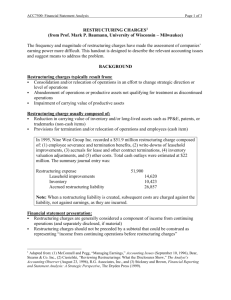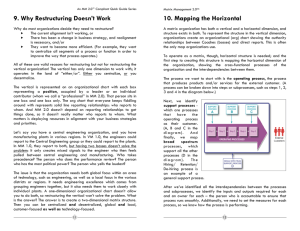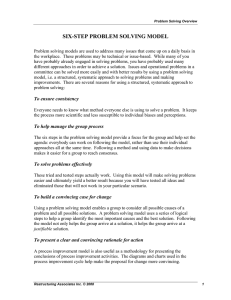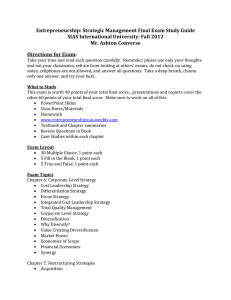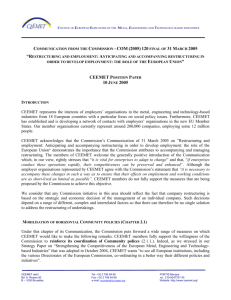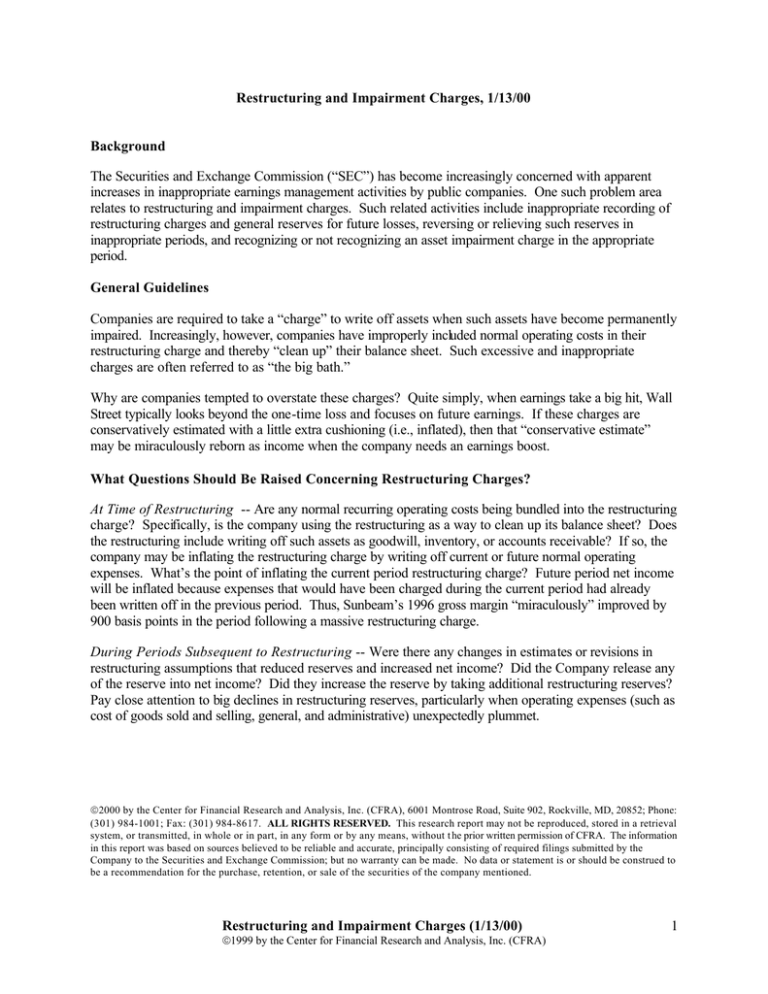
Restructuring and Impairment Charges, 1/13/00
Background
The Securities and Exchange Commission (“SEC”) has become increasingly concerned with apparent
increases in inappropriate earnings management activities by public companies. One such problem area
relates to restructuring and impairment charges. Such related activities include inappropriate recording of
restructuring charges and general reserves for future losses, reversing or relieving such reserves in
inappropriate periods, and recognizing or not recognizing an asset impairment charge in the appropriate
period.
General Guidelines
Companies are required to take a “charge” to write off assets when such assets have become permanently
impaired. Increasingly, however, companies have improperly included normal operating costs in their
restructuring charge and thereby “clean up” their balance sheet. Such excessive and inappropriate
charges are often referred to as “the big bath.”
Why are companies tempted to overstate these charges? Quite simply, when earnings take a big hit, Wall
Street typically looks beyond the one-time loss and focuses on future earnings. If these charges are
conservatively estimated with a little extra cushioning (i.e., inflated), then that “conservative estimate”
may be miraculously reborn as income when the company needs an earnings boost.
What Questions Should Be Raised Concerning Restructuring Charges?
At Time of Restructuring -- Are any normal recurring operating costs being bundled into the restructuring
charge? Specifically, is the company using the restructuring as a way to clean up its balance sheet? Does
the restructuring include writing off such assets as goodwill, inventory, or accounts receivable? If so, the
company may be inflating the restructuring charge by writing off current or future normal operating
expenses. What’s the point of inflating the current period restructuring charge? Future period net income
will be inflated because expenses that would have been charged during the current period had already
been written off in the previous period. Thus, Sunbeam’s 1996 gross margin “miraculously” improved by
900 basis points in the period following a massive restructuring charge.
During Periods Subsequent to Restructuring -- Were there any changes in estimates or revisions in
restructuring assumptions that reduced reserves and increased net income? Did the Company release any
of the reserve into net income? Did they increase the reserve by taking additional restructuring reserves?
Pay close attention to big declines in restructuring reserves, particularly when operating expenses (such as
cost of goods sold and selling, general, and administrative) unexpectedly plummet.
2000 by the Center for Financial Research and Analysis, Inc. (CFRA), 6001 Montrose Road, Suite 902, Rockville, MD, 20852; Phone:
(301) 984-1001; Fax: (301) 984-8617. ALL RIGHTS RESERVED. This research report may not be reproduced, stored in a retrieval
system, or transmitted, in whole or in part, in any form or by any means, without t he prior written permission of CFRA. The information
in this report was based on sources believed to be reliable and accurate, principally consisting of required filings submitted by the
Company to the Securities and Exchange Commission; but no warranty can be made. No data or statement is or should be construed to
be a recommendation for the purchase, retention, or sale of the securities of the company mentioned.
Restructuring and Impairment Charges (1/13/00)
1999 by the Center for Financial Research and Analysis, Inc. (CFRA)
1
Recent SEC Initiative: Staff Accounting Bulletin No. 100
On November 24, 1999, the SEC issued SAB No. 100 to provide guidance on the accounting for, and
disclosure of, certain expenses and liabilities reported in connection with both restructuring activities and
business combinations as well as recognition and disclosure of asset impairment charges. A summary of
the key points in SAB No. 100 follows:
I.
Restructuring Charges. The term “restructuring charge” is not defined in the existing
authoritative literature. While the events or transactions triggering the recognition of what
are often identified as restructuring charges vary, these charges typically result from the
consolidation and/or relocation of operations, or the disposition or abandonment of operations
or productive assets. Restructuring charges may be incurred in connection with a business
combination, a change in an enterprise’s strategic plan, or a managerial response to declines
in demand, increasing costs, or other environmental factors. Some types of restructuring
charges, such as “exit costs” are recognized as liabilities and charged to operations when
management commits a restructuring plan, while other types of restructuring charges
contemplated by the plan may not be recognized until they are actually incurred.
II.
Characteristics of an Exit Plan: Authoritative guidance is found in Emerging Issues Task
Force (“EITF”) Issue No. 94-3. Accrual of certain involuntary employee termination benefits
and exit costs requires a commitment by the company to a termination or exit plan that
specifically identifies all actions to be taken. Not all plans qualify for recognizing a liability
for exit costs or involuntary employee termination benefits. In order for the plan to qualify,
the following factors must be present:
1. Plan must specifically identify all significant actions to complete the exit plan and the
period of time to complete the exit plan indicates that significant changes to the plan are
not likely.
2. The level of detail and precision of estimation should be comparable to other operating or
capital budgets that the company prepares. Thus, the absence of procedures to detect or
explain variances would indicate that the plan’s authenticity to serve as the basis for
recognizing a liability for exit costs.
3. Repeated material changes in the nature timing or amount of estimated costs may create a
problem in accruing the restructuring liability.
III.
Characteristics of Exit Costs
1. not associated with or does not benefit activities that will be continued
2. not associated with or is not incurred to generate revenues after commitment date
3. meets one of the following criteria:
a. it is incremental to other costs incurred in the company’s conduct or activities
prior to commitment date and will be incurred as a direct result of the exit plan
or,
Restructuring and Impairment Charges (1/13/00)
1999 by the Center for Financial Research and Analysis, Inc. (CFRA)
2
b. the cost will be incurred under a contractual obligation that existed prior to the
commitment date and will either continue after the plan is completed with no
economic benefit to the company or be a penalty to cancel the contractual
obligation
IV.
Subsequent period issues to consider. At each balance sheet date, exit costs and involuntary
employee termination benefit accruals should be evaluated to ensure that any accrued amount
no longer needed for its original purpose is reversed in a timely manner. When an exit,
termination, or other loss accrual is no longer appropriate, reversal of the liability should be
recorded through the same income statement line item that was used when the liability was first
recorded. Generally accepted accounting principles (“GAAP”) do not permit unused or excess
liability accruals to be either retained as general accruals or to be used for purposes other than
that for which liability was originally established. In addition, costs actually incurred in
connection with an exit plan should be charged to the exit accrual only to the extent those costs
were specifically included in the original estimation of the accrual. Costs incurred in
connection with the exit plan, but not specifically contemplated in the original estimate, should
be charged to operating expense in the period incurred.
Restructuring and Impairment Charges (1/13/00)
1999 by the Center for Financial Research and Analysis, Inc. (CFRA)
3


